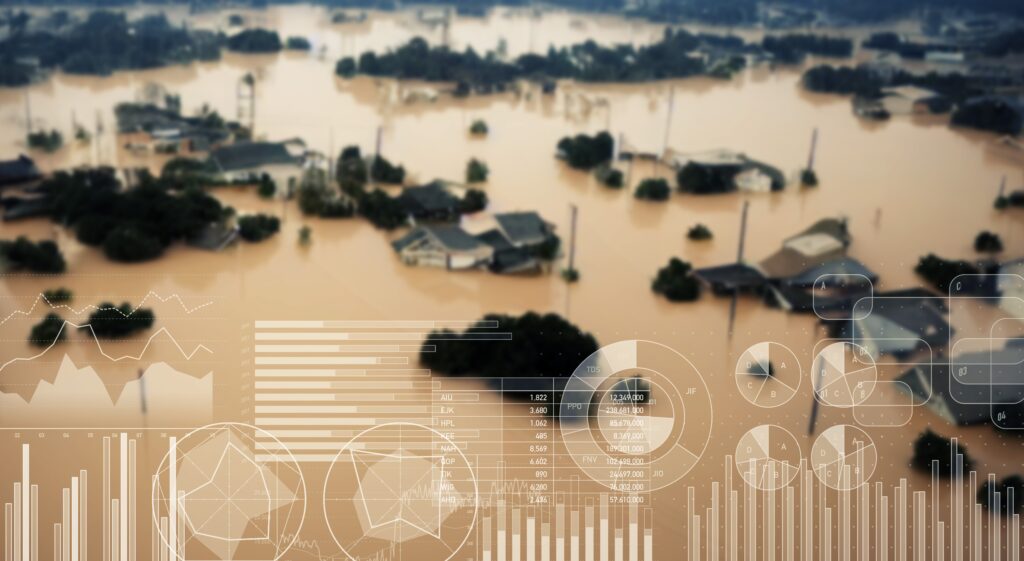When reliability, safety, and cost collide, the winner is the team working from one version of the truth and acting on it quickly.
In utilities, that means SAP WAM, OMS and ADMS events, AMI and SCADA signals, GIS, weather, wildfire risk, and dispatch data living together as governed products you can trust.
With that foundation in place, agents can propose smart actions, people can review and approve, and updates can flow back to SAP and the field systems that crews rely on every day.
Recent headlines underline the stakes. Major wildfire mitigation programs are accelerating, regulators are formalizing annual wildfire plan processes, and federal guidance is pushing storm resilience planning that changes cadence during events.
In other words, boards and commissions expect decisions that are explainable and backed by a consistent data backbone. Reliable data products are not cosmetic. They are the control surface for outage response, vegetation programs, and storm logistics.

The “Three Doors,” Tuned for a Utility
Door A: Operations. Where work happens. Fiori or SAP Asset Manager, OMS and ADMS consoles, and GIS maps that crews and control rooms use to release, switch, patrol, and confirm work.
Door B: Leadership. Where decisions land. Executive and regulatory boards in SAC and Snowflake-fed dashboards for SAIDI, SAIFI, MAIFI, MTTR, backlog burn, spend versus plan, and contractor performance.
Door C: Analytics and Agents. Where cross-system data comes together. Snowflake hosts governed products and agent workflows. Agents propose, explain, and on approval write back to SAP via BDC, and to OMS, ADMS, GIS, or dispatch where those are the operational sources of record.
As stressed earlier in this series, the important part is not the labels. It is that the same governed products feed all three. Change a definition once and see the effect everywhere.
Three High-impact WAM Use Cases
1. Outage Triage and Crew Pre-assignment
The problem today: Triage runs long, ETAs slip, and crews are mis-bundled.
What changes: Blend SAP work and crew data with OMS or ADMS events, AMI “last-gasp,” GIS traces, weather, and traffic. An agent suggests fault bundles, checks material readiness, and proposes crew plans. On approval, dispatch assignments go out and SAP reservations update.
What it delivers: Faster restoration, fewer truck rolls, and reliability gains that show up in SAIDI and SAIFI.
2. Vegetation risk to patrol and cut plan
The problem today: Tree-related outages and wildfire exposure, with prioritization that is hard to defend.
What changes: Use SAP spans and history as the spine. Add satellite or LiDAR, wildfire indices, and easements from GIS. An agent ranks spans, packages patrol and cut work, and projects risk reduction. Framework orders land in SAP and contractor map packs publish to GIS.
What it delivers: Measurable risk reduction and a plan that holds up with regulators and external review.
3. Storm stocks and pre-staging
The problem today: Depots do not have the right kits when storms arrive. Crews idle and recovery slows.
What changes: Combine SAP inventory, open POs, and lead times with forecast cones and historic burn rates. An agent sizes depot kits and proposes transfers. On approval, STOs and reservations post in SAP, and route advisories go to dispatch and GIS.
What it delivers: Faster starts for crews, lower idle time, and shorter restoration windows.

A Day in the Life for Utilities and WAM (Concurrent Work, Not a Straight Line)
Truth updates: Goods receipts post in Fiori. Availability updates on operational tiles. In Snowflake, SAP BDC products and external feeds refresh on their own cadence. Dynamic Tables roll forward inputs for outage triage, vegetation, and storm kits.
Proposals and review: In the Snowflake workspace, an agent proposes outage bundles, vegetation patrols, or storm kits with plain-English reasons. Analysts make small adjustments and re-run as new receipts, events, or weather arrive.
Approvals and actions: On approval, the agent writes assignments, reservations, or status updates back to SAP. It also sends the right instructions to OMS or ADMS, GIS, or dispatch.
Leadership visibility: Boards update automatically. Reliability, spend, backlog burn, contractor productivity, and risk reduction move in step with field actions. No side spreadsheets.
Learning loop: At day’s end, teams review results, adjust rules or freshness targets, and capture lessons for the next event or season.
Governance and Spend you Can Explain
Catalog and policy in the flow: Products are registered in Horizon with owners, lineage, sensitivity, and policy. When a regulator asks why a feeder or span was prioritized, you can show the math and the approvals.
Freshness that matches the moment: Dynamic Tables let you set tighter cadence during events and more relaxed cadence on calm days. Cost follows the SLA you choose.
Where to start in 6 to 8 weeks
- Outage triage and crew pre-assignment. Two circuits through one event window, measured against your latest reliability baseline.
- Vegetation risk prioritization. One high-risk area with contractor packaging and a clear before and after risk profile.
- Storm stocks pre-stage. Two depots ahead of the next storm window, tracking crew idle time and restoration speed.
Each pilot ships with a short list of SAP BDC products, the external systems in scope for reads and write-backs, owners and policies in the catalog, agreed freshness targets, and an agent “explain” log that shows why each choice was made.

The Long and Short: One IBM Team for Tangible Results
We do not come at this as a tooling exercise. We treat analytics as a functional enabler for safety, reliability, and cost.
That is why we show up as one team. Hakkoda’s SAP analytics practice builds the governed data products and agent workflows. IBM’s S/4 and WAM experts keep those decisions true to clean core, Fiori and Asset Manager, OMS and ADMS, GIS, and dispatch.
The result is not just a smarter dashboard. It is faster restoration, clearer wildfire plans, and storm preparation that stands up to scrutiny, all built on shared, authoritative facts that your operators and your board can trust.
Ready to start building for the future of utilities and WAM? Let’s talk.





